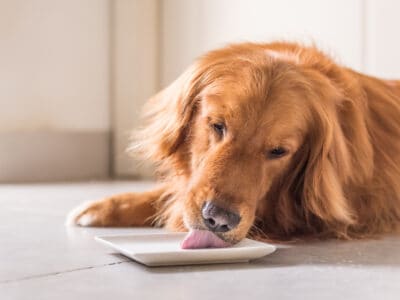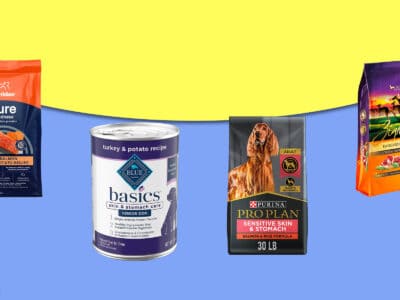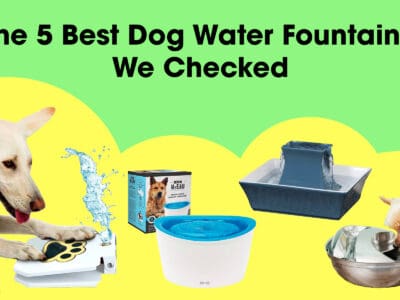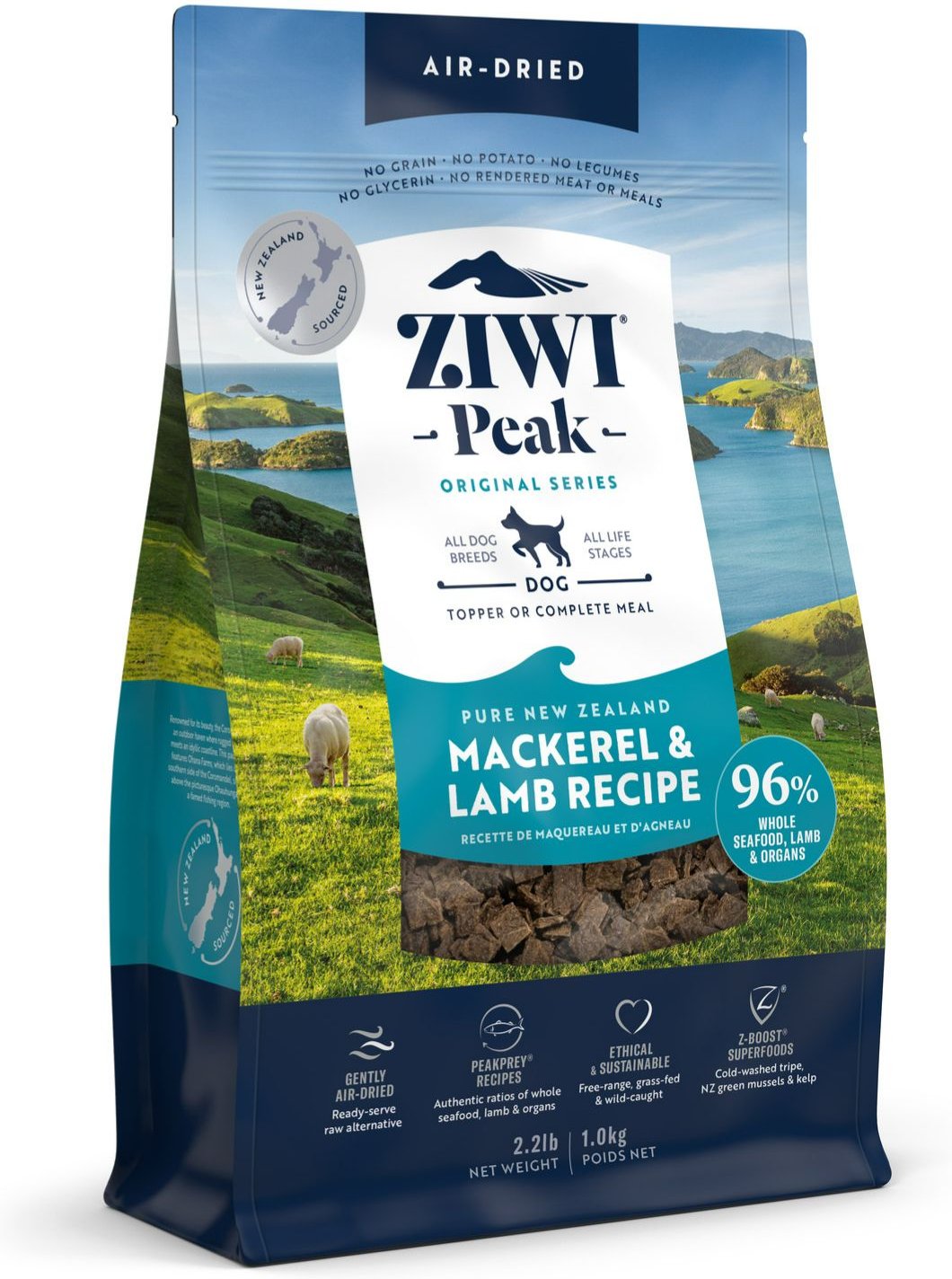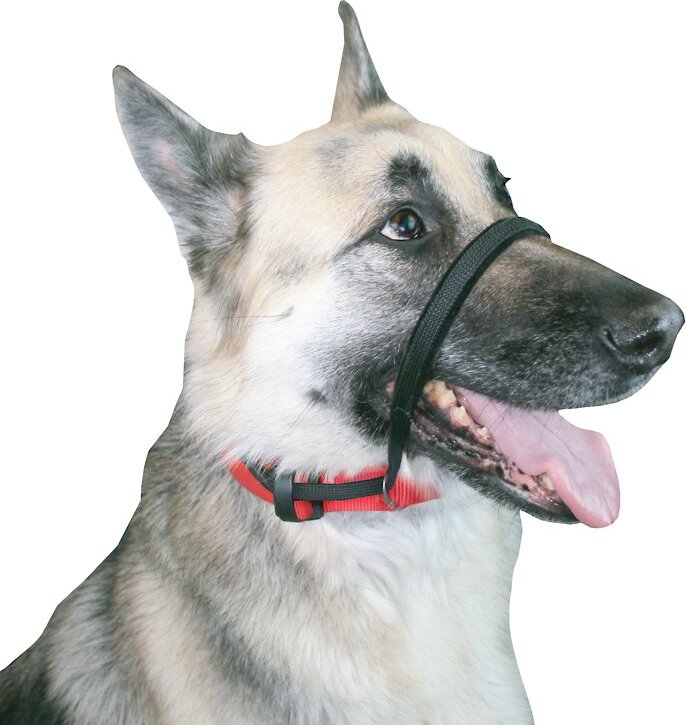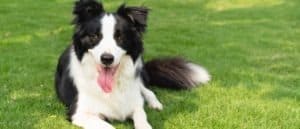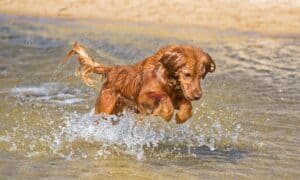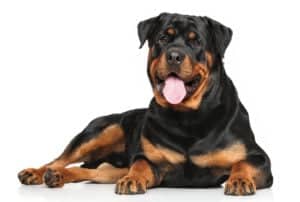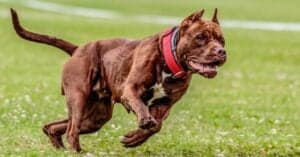Dogs Eating Onions Is Dangerous! Here’s Why
Onions are a favorite ingredient in many dishes and are found in most kitchens. They bring flavor and texture to many recipes and are one of the most versatile vegetables that we use. However, does their presence in so many homes and in so much human food present a risk to our pets? Can dogs eat onions?
No, dogs cannot eat onions of any sort and in any form so that includes shallots, leeks, garlic, cooked onions, and even onion powder.
Can Dogs Eat Onions..and Why Not?
No, the scientific evidence is clear that dogs cannot eat onions. They contain a variety of organosulfur compounds including Di-propyl-disulfide (N-propyl disulphide) and allyl propylisulfide which are all highly toxic to dogs. Here’s why that is.
These chemicals destroy red blood cells through a process called oxidative hemolysis.
They enter a dog’s bloodstream in the gut and are metabolized into highly reactive oxidants. These attach themselves to a substance called hemoglobin that is found inside red blood cells. This is a problem because hemoglobin has an important job to do. It combines with oxygen in the lungs and transports it to other parts of the body where it is released and used by the body.
However, N-propyl disulphide makes red blood cells clump together into lumps called Heinz bodies and they can no longer carry oxygen in the way they should. What’s worse is that the body’s immune system acts as if the Heinz bodies are germs or foreign bodies because they do not recognize them as regular cells. The dog’s body, therefore, starts to destroy its own red blood cells in a process called hemolysis. The red blood cells get destroyed faster than the body can replace them and soon all the organs of the body start to suffer from a lack of oxygen. The resulting condition is called hemolytic anemia.
- Gluten-free, high protein formula
- Ideal for pregnant and nursing dogs
- Added vitamins and minerals
- Contains 38% protein
What Sort of Onions Are Toxic to Dogs?
All types of onions are toxic to dogs. Any vegetables that are part of the allium family of plants (root vegetables) are not safe for dogs to eat. This includes garlic, green onions, shallots, and chives. So, that means that dogs cannot eat onions of any color! Garlic has the highest concentration of organosulfur compounds of the whole allium family and is, therefore, the most toxic.
Both cooked and raw onions are toxic to dogs so your four-legged friend cannot eat any sauces or dishes that contain any type of onion or garlic. Also, all parts of the onion are toxic including all the leaves and flesh and even onion juice.
Onion, garlic, leek, and chive are the allium species most often implicated in dog poisonings.
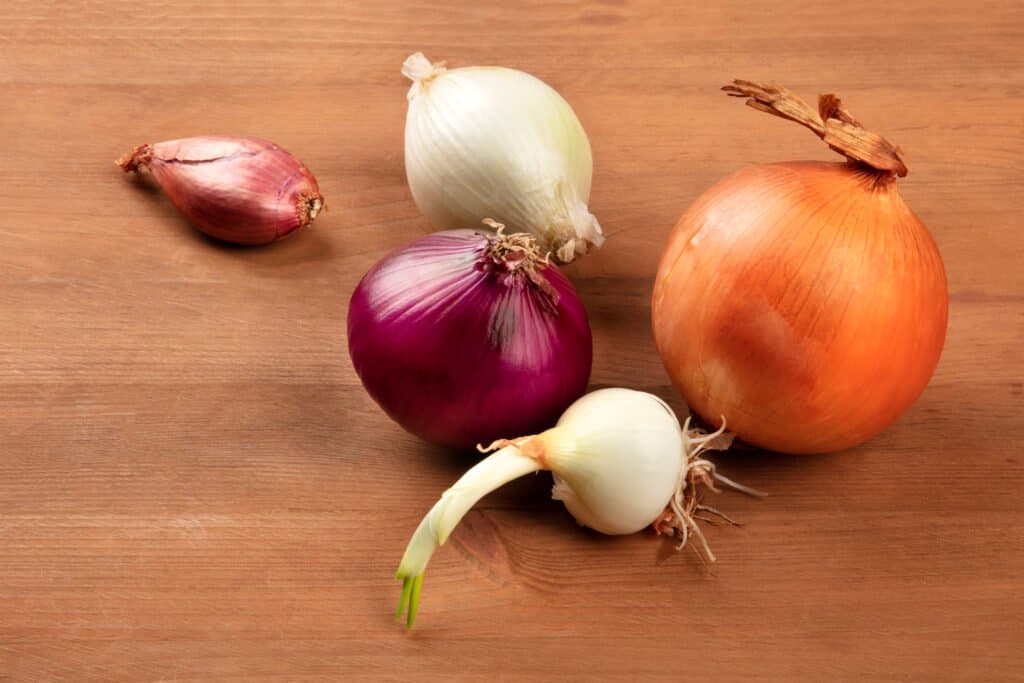
/Shutterstock.com
Is Onion Powder Toxic to Dogs?
Onion powder looks nothing like an onion! It has been processed and dried out and looks like it could be safe for dogs – but that is far from the case!
In fact, onion powder and garlic powder are especially dangerous for our four-legged friends. Firstly, this is because it is found in such a wide range of human foods including products that you may not suspect contain onions at all. Many shop-bought soups, baked products, and even baby food contain onion or garlic powder. This is a problem if you are in the habit of feeding your dog scraps of human food or if they clean up all the debris under the dining table.
Secondly, onion and garlic powders contain a very concentrated amount of toxic sulphide products and therefore present a greater risk than fresh onions.
- Great reading experience
- Lots of practical tips
- Include fun games
- Written by YouTube star Zak George
How Much Onion Is Toxic to Dogs?
Of course, the metabolism of all dogs is different and some will be able to tolerate larger doses of onion than others. Nevertheless, the American Kennel Club estimates that just 100 grams of onion are needed per 20 kg of a dog’s weight to cause a toxic effect. You can work out the toxic dose approximately for your dog by calculating 0.5% of their body weight. But the only safe quantity of onion for dogs is – none!
So, what does this mean in practice?
If you have a 45-pound dog (around the size of an average Border Collie), one medium onion is all that’s needed to reach toxic levels in the bloodstream. You would find that much onion in one serving of a casserole or in a portion of onion rings. Much less is needed to make a smaller dog very ill indeed.
- Premium, nutrient-dense food
- No fillers like grain, potato, or peas
- Stay fresh longer
- Whole-prey formula
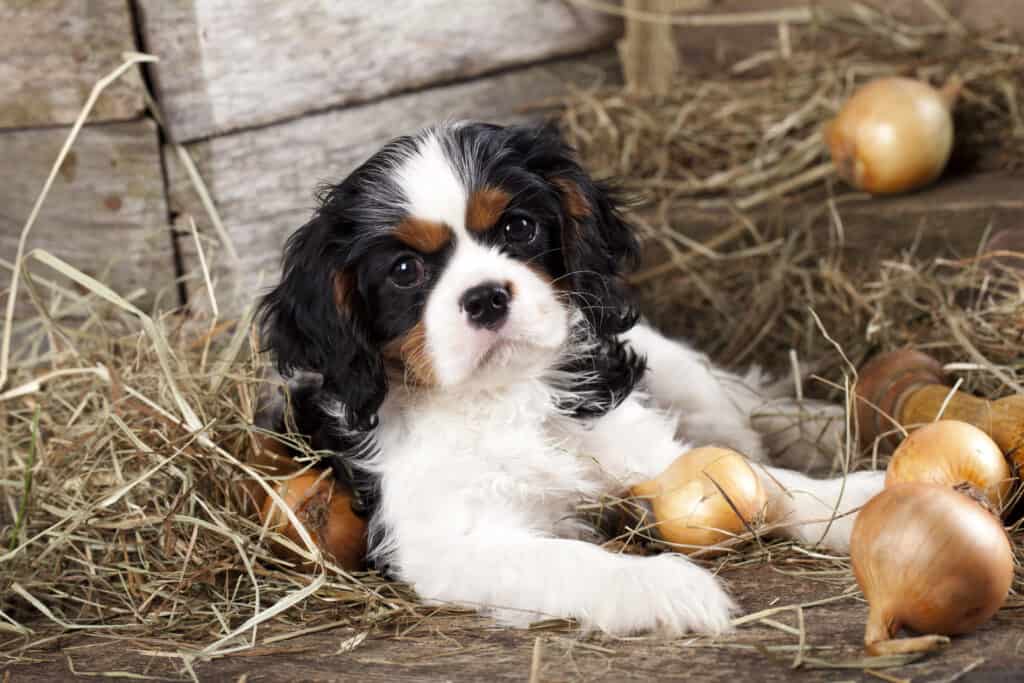
Liliya Kulianionak/Shutterstock.com
Signs and Symptoms
The symptoms can start within hours but it is typical for them to start a few days after a dog has ingested onion. Higher doses of onion tend to trigger a more rapid response. What is more worrying, is that the toxic compounds can build up in your dog’s body over time if they continually eat small amounts of onion. Eventually, it will get to a level that will make them ill. Typical signs of onion poisoning include:
- Weakness
- Lack of energy (lethargy)
- Not wanting to eat
- Pale gums
- Fainting
- Reddish urine
- Vomiting
- Diarrhea
- Fast heartbeat
- Panting
If your dog is showing these symptoms, you should contact your vet straight away even if you have not seen them eat an onion. They could have eaten one when you were not looking!
What to Do if Your Dog Eats Onion
You may see your dog eating an onion or a food that contains onion. Some dogs will eat a whole onion or chew a container of powdered onion if they manage to get hold of them. However, it is more common for dogs to eat human food that contains onions, onion powder, or garlic because they have pinched it from a table or because they have been fed it by someone who did not realize it was toxic for them.
If you don’t actually see your dog eating onion, you may smell onion on their breath. If either of these things happens, you should call your vet right away for some advice. Try to keep calm and give plenty of details about what your dog has eaten and the quantity that they have consumed.
Diagnosis and Treatment
Onion poisoning in dogs is not something that you can treat yourself, you must speak to your vet. They can diagnose onion toxicity from the physical signs and symptoms and laboratory tests. Hemolytic anemia caused by onion poisoning can be diagnosed by looking at blood samples under a microscope – the Heinz bodies appear on blood smears as purple blobs.
Onion toxicity is potentially fatal in dogs so it is vital that the vet acts fast. The chosen treatment will depend on a number of factors including how long ago the dog ingested the onion and how much of it they ate. The vet may be able to induce vomiting or use a stomach flush to remove undigested onions. Dogs may need IV fluids, oxygen, or even blood transfusions to support them as they recover. With the correct treatment, most dogs will make a full recovery.
- Perfect for dogs that are pulling very badly on the leash
- Provides immediate correction
- Comfortable and easy to put on
- Recommended by vets
How to Prevent Onion Poisoning in Dogs
Prevention is always better than cure when it comes to onion poisoning in dogs. There are plenty of things that you can do protect your four-legged friend from this hazard. Here are our top suggestions.
- Don’t feed your dog human food. If you can get out of the habit of feeding human food to your dog, the risk will reduce dramatically. It is a lot of hassle to keep checking lists of ingredients and working out what products they can and cannot eat. Just don’t feed them processed human food at all. As for vegetables, if you stick to carrots you can’t go far wrong!
- Store onions where dogs cannot get at them. Store all onion vegetables, including garlic and chive, in a place that your dog cannot reach.
- Teach your dog to not steal food from counters. No dog should be allowed access to human food on counters because they simply cannot tell what is safe and will gobble the lot! Teach your dog that this is not acceptable behavior from a young age.
- Feed a balanced diet. Feed your dog a high-quality, premium dog food with plenty of protein and healthy carbs so that they will feel full for longer and will be less likely to be attracted to human food.
- Teach the “leave it” command. This is one of the most important commands that you can teach your dog and it may save their life. There are plenty of training books and guides that will guide you through the process.
- Use a head halter or muzzle. You can lead your dog away from food scraps on the sidewalk more effectively if you have a head halter. If eating garbage is a real issue for your dog, you may need to use a muzzle in extreme cases.
Ready to discover the top 10 cutest dog breeds in the entire world?
How about the fastest dogs, the largest dogs and those that are — quite frankly — just the kindest dogs on the planet? Each day, AZ Animals sends out lists just like this to our thousands of email subscribers. And the best part? It’s FREE. Join today by entering your email below.
FAQs (Frequently Asked Questions)
Are some dog breeds more prone to onion poisoning?
Any dog breed that regularly eats scraps of food from the sidewalk is more at risk of ingesting something containing onion. Labradors are a typical example. Also, Japanese dog breeds metabolize the organosulphur compounds more readily into the chemicals that damage the red blood cells. This includes the Akita breed and the Shiba Inu breed.
More from A-Z Animals
Onions are a favorite ingredient in many dishes and are found in most kitchens. They bring flavor and texture to many recipes and are one of the most versatile vegetables that we use. However, does their presence in so many homes and in so much human food present a risk to our pets? Can dogs eat onions?
No, dogs cannot eat onions of any sort and in any form so that includes shallots, leeks, garlic, cooked onions, and even onion powder.
Can Dogs Eat Onions..and Why Not?
No, the scientific evidence is clear that dogs cannot eat onions. They contain a variety of organosulfur compounds including Di-propyl-disulfide (N-propyl disulphide) and allyl propylisulfide which are all highly toxic to dogs. Here’s why that is.
These chemicals destroy red blood cells through a process called oxidative hemolysis.
They enter a dog’s bloodstream in the gut and are metabolized into highly reactive oxidants. These attach themselves to a substance called hemoglobin that is found inside red blood cells. This is a problem because hemoglobin has an important job to do. It combines with oxygen in the lungs and transports it to other parts of the body where it is released and used by the body.
However, N-propyl disulphide makes red blood cells clump together into lumps called Heinz bodies and they can no longer carry oxygen in the way they should. What’s worse is that the body’s immune system acts as if the Heinz bodies are germs or foreign bodies because they do not recognize them as regular cells. The dog’s body, therefore, starts to destroy its own red blood cells in a process called hemolysis. The red blood cells get destroyed faster than the body can replace them and soon all the organs of the body start to suffer from a lack of oxygen. The resulting condition is called hemolytic anemia.
- Gluten-free, high protein formula
- Ideal for pregnant and nursing dogs
- Added vitamins and minerals
- Contains 38% protein
What Sort of Onions Are Toxic to Dogs?
All types of onions are toxic to dogs. Any vegetables that are part of the allium family of plants (root vegetables) are not safe for dogs to eat. This includes garlic, green onions, shallots, and chives. So, that means that dogs cannot eat onions of any color! Garlic has the highest concentration of organosulfur compounds of the whole allium family and is, therefore, the most toxic.
Both cooked and raw onions are toxic to dogs so your four-legged friend cannot eat any sauces or dishes that contain any type of onion or garlic. Also, all parts of the onion are toxic including all the leaves and flesh and even onion juice.
Onion, garlic, leek, and chive are the allium species most often implicated in dog poisonings.

/Shutterstock.com
Is Onion Powder Toxic to Dogs?
Onion powder looks nothing like an onion! It has been processed and dried out and looks like it could be safe for dogs – but that is far from the case!
In fact, onion powder and garlic powder are especially dangerous for our four-legged friends. Firstly, this is because it is found in such a wide range of human foods including products that you may not suspect contain onions at all. Many shop-bought soups, baked products, and even baby food contain onion or garlic powder. This is a problem if you are in the habit of feeding your dog scraps of human food or if they clean up all the debris under the dining table.
Secondly, onion and garlic powders contain a very concentrated amount of toxic sulphide products and therefore present a greater risk than fresh onions.
- Great reading experience
- Lots of practical tips
- Include fun games
- Written by YouTube star Zak George
How Much Onion Is Toxic to Dogs?
Of course, the metabolism of all dogs is different and some will be able to tolerate larger doses of onion than others. Nevertheless, the American Kennel Club estimates that just 100 grams of onion are needed per 20 kg of a dog’s weight to cause a toxic effect. You can work out the toxic dose approximately for your dog by calculating 0.5% of their body weight. But the only safe quantity of onion for dogs is – none!
So, what does this mean in practice?
If you have a 45-pound dog (around the size of an average Border Collie), one medium onion is all that’s needed to reach toxic levels in the bloodstream. You would find that much onion in one serving of a casserole or in a portion of onion rings. Much less is needed to make a smaller dog very ill indeed.
- Premium, nutrient-dense food
- No fillers like grain, potato, or peas
- Stay fresh longer
- Whole-prey formula

Liliya Kulianionak/Shutterstock.com
Signs and Symptoms
The symptoms can start within hours but it is typical for them to start a few days after a dog has ingested onion. Higher doses of onion tend to trigger a more rapid response. What is more worrying, is that the toxic compounds can build up in your dog’s body over time if they continually eat small amounts of onion. Eventually, it will get to a level that will make them ill. Typical signs of onion poisoning include:
- Weakness
- Lack of energy (lethargy)
- Not wanting to eat
- Pale gums
- Fainting
- Reddish urine
- Vomiting
- Diarrhea
- Fast heartbeat
- Panting
If your dog is showing these symptoms, you should contact your vet straight away even if you have not seen them eat an onion. They could have eaten one when you were not looking!
What to Do if Your Dog Eats Onion
You may see your dog eating an onion or a food that contains onion. Some dogs will eat a whole onion or chew a container of powdered onion if they manage to get hold of them. However, it is more common for dogs to eat human food that contains onions, onion powder, or garlic because they have pinched it from a table or because they have been fed it by someone who did not realize it was toxic for them.
If you don’t actually see your dog eating onion, you may smell onion on their breath. If either of these things happens, you should call your vet right away for some advice. Try to keep calm and give plenty of details about what your dog has eaten and the quantity that they have consumed.
Diagnosis and Treatment
Onion poisoning in dogs is not something that you can treat yourself, you must speak to your vet. They can diagnose onion toxicity from the physical signs and symptoms and laboratory tests. Hemolytic anemia caused by onion poisoning can be diagnosed by looking at blood samples under a microscope – the Heinz bodies appear on blood smears as purple blobs.
Onion toxicity is potentially fatal in dogs so it is vital that the vet acts fast. The chosen treatment will depend on a number of factors including how long ago the dog ingested the onion and how much of it they ate. The vet may be able to induce vomiting or use a stomach flush to remove undigested onions. Dogs may need IV fluids, oxygen, or even blood transfusions to support them as they recover. With the correct treatment, most dogs will make a full recovery.
- Perfect for dogs that are pulling very badly on the leash
- Provides immediate correction
- Comfortable and easy to put on
- Recommended by vets
How to Prevent Onion Poisoning in Dogs
Prevention is always better than cure when it comes to onion poisoning in dogs. There are plenty of things that you can do protect your four-legged friend from this hazard. Here are our top suggestions.
- Don’t feed your dog human food. If you can get out of the habit of feeding human food to your dog, the risk will reduce dramatically. It is a lot of hassle to keep checking lists of ingredients and working out what products they can and cannot eat. Just don’t feed them processed human food at all. As for vegetables, if you stick to carrots you can’t go far wrong!
- Store onions where dogs cannot get at them. Store all onion vegetables, including garlic and chive, in a place that your dog cannot reach.
- Teach your dog to not steal food from counters. No dog should be allowed access to human food on counters because they simply cannot tell what is safe and will gobble the lot! Teach your dog that this is not acceptable behavior from a young age.
- Feed a balanced diet. Feed your dog a high-quality, premium dog food with plenty of protein and healthy carbs so that they will feel full for longer and will be less likely to be attracted to human food.
- Teach the “leave it” command. This is one of the most important commands that you can teach your dog and it may save their life. There are plenty of training books and guides that will guide you through the process.
- Use a head halter or muzzle. You can lead your dog away from food scraps on the sidewalk more effectively if you have a head halter. If eating garbage is a real issue for your dog, you may need to use a muzzle in extreme cases.
Ready to discover the top 10 cutest dog breeds in the entire world?
How about the fastest dogs, the largest dogs and those that are — quite frankly — just the kindest dogs on the planet? Each day, AZ Animals sends out lists just like this to our thousands of email subscribers. And the best part? It’s FREE. Join today by entering your email below.

